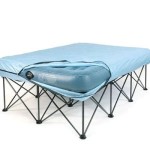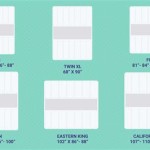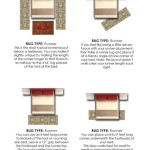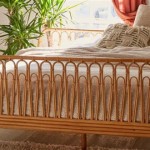How to Convert an Antique Full Bed to a Queen, King, or Other Size Frame
Antique beds, with their intricate carvings, timeless designs, and rich history, often hold a special place in our homes. However, their dimensions can sometimes pose a challenge. A beautiful antique full bed, while charming, might not be the ideal size for a modern bedroom. Luckily, converting an antique full bed to a larger size, like a queen or king, is a feasible project for those with woodworking skills and a love for antique furniture. This guide outlines the steps involved in this conversion, providing essential information for a successful transformation.
1. Assess the Bed Frame and the Conversion Requirements
The first step involves carefully assessing the antique bed frame and determining the necessary modifications. This step requires careful consideration of the existing frame's structural integrity, the desired new bed size, and the specific adjustments required.
Evaluate the Existing Frame: Begin by examining the bed frame's condition. Check for any weaknesses, cracks, or damage that might need repair before you start the conversion. If the frame has been previously restored, inspect the quality of the restoration work to ensure it's stable enough for modifications.
Determine the New Size: Decide on the target size for your antique bed. Consider the available space in your bedroom and the desired sleeping comfort. Converting a full bed to a queen size is generally a straightforward process, but converting to a king size might require more extensive modifications.
Assess the Adjustments: Once you've chosen the new size, determine the specific modifications needed. For example, converting a full bed to a queen usually requires widening the headboard and footboard. Converting to a king size might involve extending the rails, adding side rails, or adjusting the headboard and footboard dimensions significantly.
2. Planning the Conversion: Design and Materials
Once you've assessed the bed frame and determined the required changes, it's time to plan the conversion meticulously. This planning phase involves creating a detailed design, selecting appropriate materials, and gathering the necessary tools.
Create a Detailed Design: Sketch out the bed frame's dimensions in its existing form and then draw the modifications required for the new size. Consider the proportions, visual balance, and the overall aesthetic you want to achieve after the conversion. Indicate the exact measurements for added wood, the placement of new components, and any changes to the existing structure.
Choose the Right Materials: Select high-quality, durable wood that complements the antique bed's original material and style. If the bed frame is made of oak, consider using oak for the additions. For a bed frame made of maple or mahogany, choose corresponding wood types for the new components. Make sure the wood is properly seasoned and free of knots or defects that could affect the frame's stability.
Gather the Necessary Tools: Assemble the tools you'll need for the conversion, including a saw, drill, router, sander, measuring tape, clamps, wood glue, screws, nails, and finishing materials. Ensure you have adequate safety equipment, such as eye protection, earplugs, and dust masks, to protect yourself during the woodworking process.
3. Converting the Bed Frame: Step-by-Step Process
The final step involves carrying out the conversion of the antique bed frame based on your detailed plan. This process involves cutting, shaping, and assembling the new components to achieve the desired size and maintain the bed's aesthetic appeal.
Cut and Shape New Components: Using your chosen woodworking tools, cut and shape the new pieces of wood according to your plan. This might involve adding wooden strips to widen the headboard and footboard, extending the side rails, or crafting new side rails for a king-size bed. Ensure all cuts are precisely made to maintain the bed's overall symmetry.
Assemble the New Components: Securely attach the new pieces of wood to the existing bed frame. Use strong wood glue, screws, and nails, depending on the design and the type of wood you're using. Be mindful of the placement of each component to ensure it aligns perfectly with the existing structure.
Finish the Bed Frame: Once the conversion is complete, sand down all the new components to create a smooth surface. Apply a stain, paint, or varnish to match the antique bed's original finish. Consider using a high-quality oil-based finish to protect the wood and enhance its natural beauty.

Converting An Antique Bed To A Modern Queen Or King Size Harp Gallery Furniture Blog

How To Turn Your Antique Double Bed Into A Queen Happily Ever After Etc

How To Make An Antique Full Size Bed Into A Queen Sort Of

Converting An Antique Bed To A Modern Queen Or King Size Harp Gallery Furniture Blog

How To Turn Your Antique Double Bed Into A Queen Happily Ever After Etc

Retrofitting Our Craigslist Bed Diy Custom Antique Frame

Converting An Antique Bed To A Modern Queen Or King Size Harp Gallery Furniture Blog

How To Turn Your Antique Double Bed Into A Queen Happily Ever After Etc

Converting Antique Double Bed To Queen

Size Conversion Of Your Antique Double Iron Bed
Related Posts







